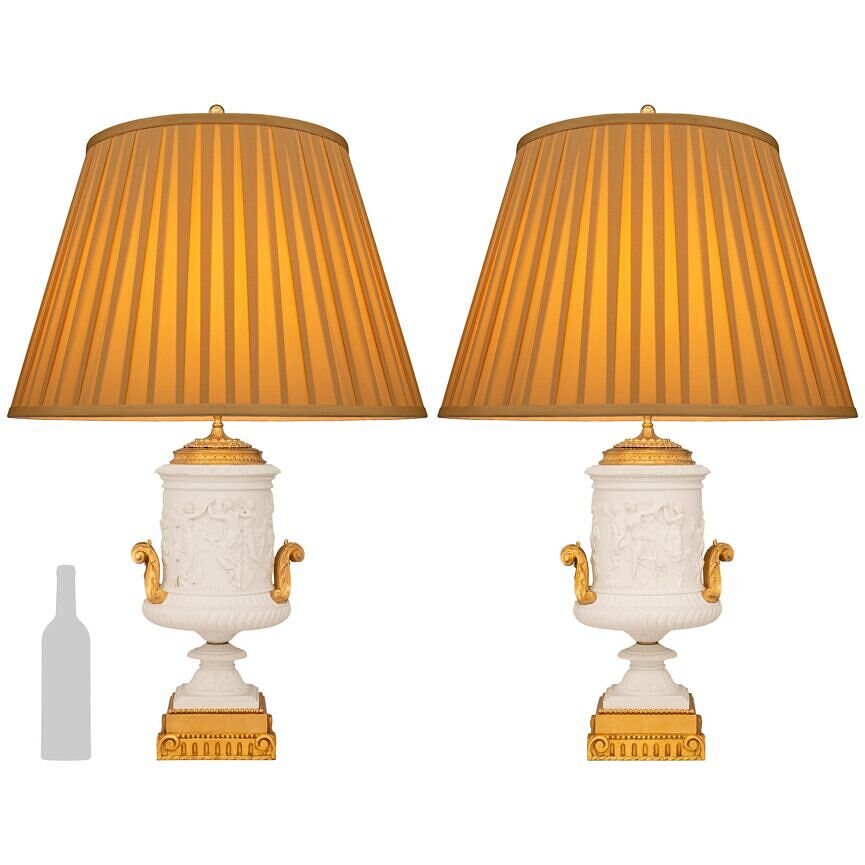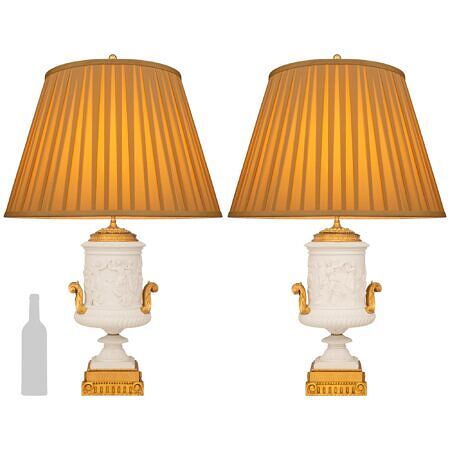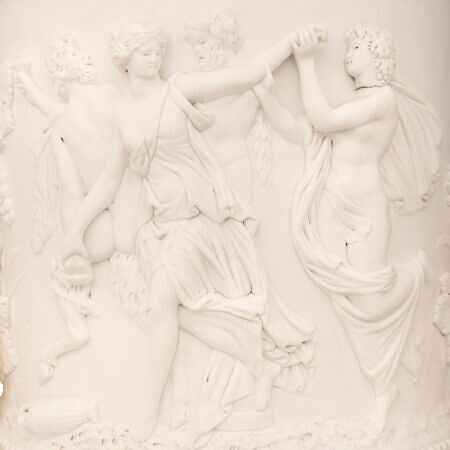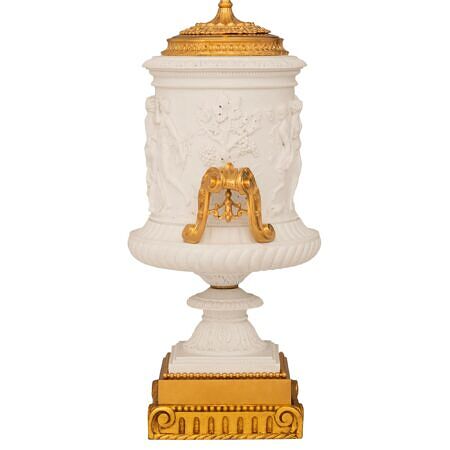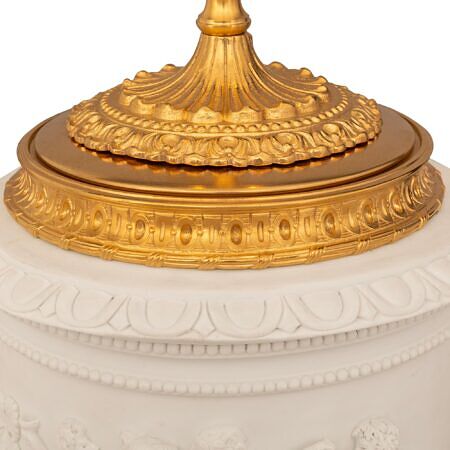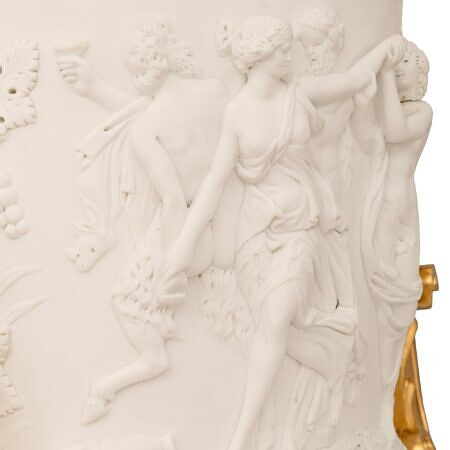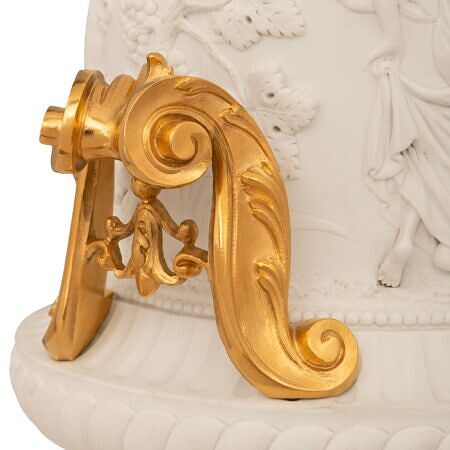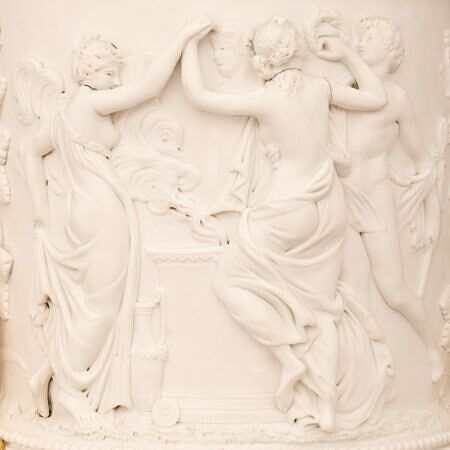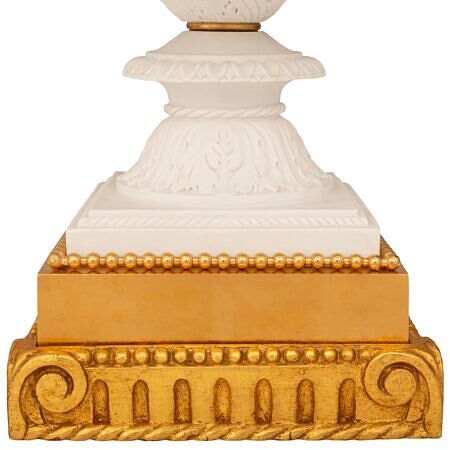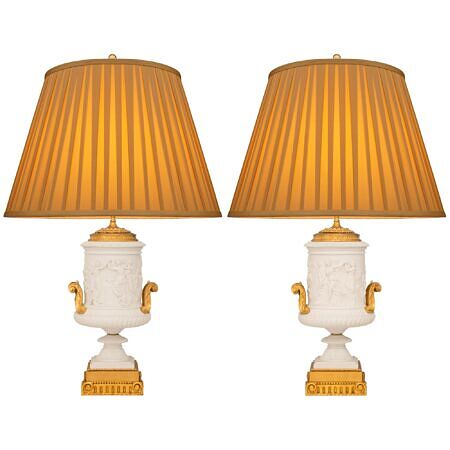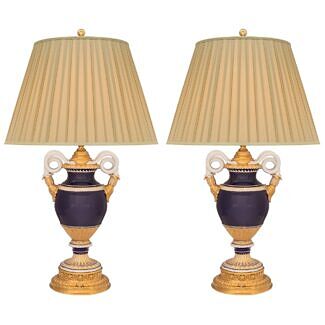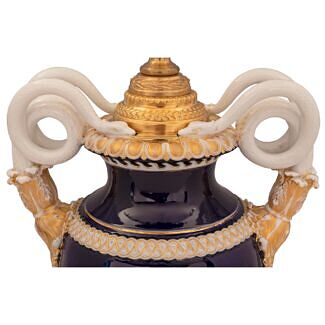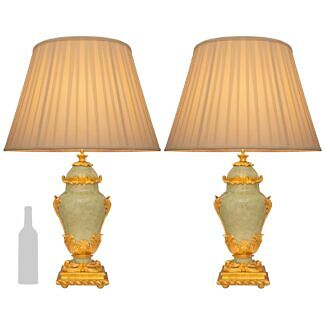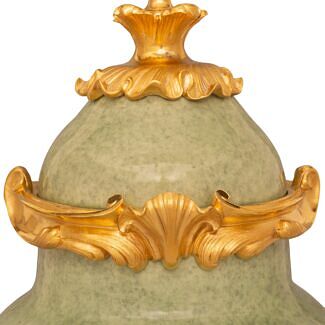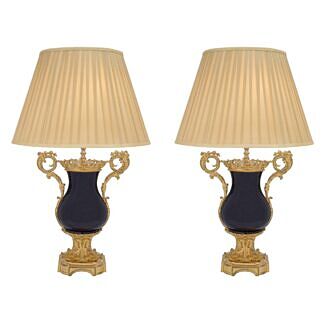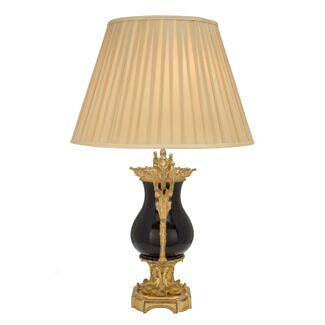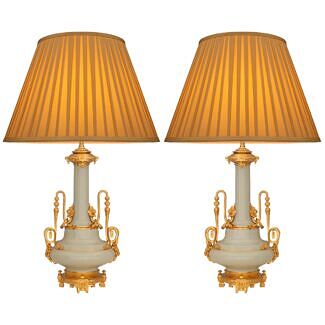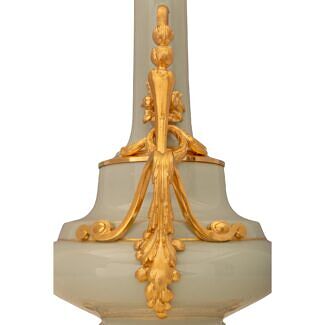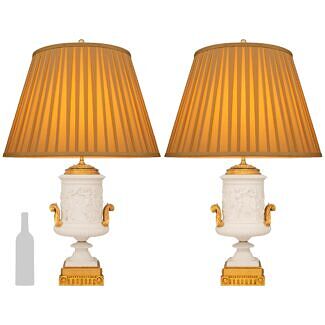A pair of French 19th century Renaissance st. Bisque Porcelain, Ormolu, and Giltwood lamps, attributed to Sèvres
List: $22,800.00
A stunning and high quality pair of French 19th century Renaissance st. Bisque Porcelain, Ormolu, and Giltwood lamps, attributed to Sèvres. Each wonderful lamp is raised on a square Giltwood fluted pedestal with a spiral bottom edge and scrolling movements... — Read More
A stunning and high quality pair of French 19th century Renaissance st. Bisque Porcelain, Ormolu, and Giltwood lamps, attributed to Sèvres. Each wonderful lamp is raised on a square Giltwood fluted pedestal with a spiral bottom edge and scrolling movements on each corner. Above the Giltwood pedestal is a square Ormolu block with a beaded band which supports the bisque Porcelain socle pedestal. The square Porcelain socle has mottled and etched edges, draping acanthus leaves, and a dentil pattern designed saucer just below an Ormolu band. The base of the bodies displays a wonderful and large scale spiral reeded design, below a fluted band and the scrolled Ormolu handles. The Ormolu handles are decorated by two scrolls which come together and are connected by a pierced foliate designed stretcher. The mid section showcases a joyful storytelling atmosphere of both male and female individuals holding drinks and dressed in flowing garments. The joyous scenes are flanked by exquisitely detailed trees with large leafs and berried branches. Above the celebration scene are beaded bands with a Coeur-de-Rai mottled edges and an Ormolu socle decorated with dentil and foliate patterned edges. — Read Less
All light fixtures have been inspected and rewired to US standards.
- Item # 13858
-
H: 36.5 in L: 11 in D: 9.75 in
H: 93 cm L: 28 cm D: 25 cm
- Shade Diameter: 25 in
- France
- 19th Century
- Giltwood, Ormolu, Porcelain
- Renaissance st. Read More
- Sèvres Read More
It was founded through the support of King Louis XV of France and at the initiative of Madame Pompadour to be located near her Château.
Due to Sèvres’ reputation for excellence and prestige, it has always attracted some of the best artists throughout history; François Boucher, Albert-Ernest Carrier-Belleuse, Étienne Maurice Falconet, Alexandre Fragonard and August Rodin, just to name a few. Many of these artworks can be seen at the Louvre Museum and the Musée National de Céramique in France.
Initially, Sèvres created a soft paste porcelain know as Biscuit de Sèvres. In 1768 the Bordeaux chemist Villaris and Jean Baptiste Darnet discovered deposits of Kaolin on French soil. In 1771 the Royal Academy sent a report on the creation of hard paste porcelain at which time Sèvres began manufacturing hard paste porcelain.
Louis-Simon Boizot (1743–1809) was a French sculptor renowned for creating Biscuit de Sèvres models, and was the director at Sèvres from 1774-1800, followed by Alexandre Brogniart(1800-1847) and Henri Victor Regnault in 1854.
Related products
-
# 11657 - H: 34" L: 10" D: 8"
-
# 13807 - H: 34" L: 10" D: 8"
-
# 8408 - H: 32" L: 13" D: 7"
-
# 12719 - H: 34" L: 10" D: 9"


